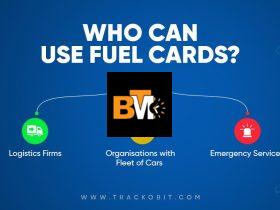The construction industry is as demanding as it is rewarding, with constant changes in technology, market trends, and regulations shaping the landscape. To stay competitive, companies need to adapt and evolve, often in ways that challenge traditional methods.
However, the speed of change can be overwhelming for businesses that are slow to react, leading to missed opportunities and lost revenue. For those ready to meet the challenge head-on, there are key strategies to ensure long-term success in this high-stakes environment.
Remaining competitive isn’t just about keeping up with the latest tools or securing the next big project. It involves a combination of innovation, smart investment, and strategic planning. Whether you’re a large firm or a small business, these five tips will help you stay ahead of the curve in an ever-evolving industry.
1. Embrace Technological Innovation
The construction industry has traditionally lagged behind when it comes to adopting new technologies, but this is changing. Companies that embrace the latest tools and techniques can save time, reduce costs, and increase efficiency. Whether it’s 3D modelling, drones, or building information modelling (BIM), integrating these technologies can set you apart from competitors who are slower to adopt. An invoicing app, for instance, can automate billing processes, reduce errors, and ensure timely payments, enhancing overall financial efficiency.
- Building Information Modelling (BIM): BIM enables teams to collaborate on a digital model of the project, providing real-time updates and reducing errors. This tool is becoming increasingly critical for larger projects and those working with government contracts.
- Drones: Drones provide real-time surveillance and data collection, improving safety and efficiency on large worksites. They can monitor progress and help managers make informed decisions quickly.
Adopting these technologies shows that you’re forward-thinking and committed to delivering high-quality work in less time. Moreover, many clients now prefer companies that use modern tools, as it assures them of better results.
2. Invest in Workforce Development
A company is only as strong as its workforce. In construction, this means investing in training and upskilling your employees regularly. As new materials, methods, and technologies enter the market, workers need to be equipped to handle them. By providing regular training, not only do you improve the skill level of your team, but you also boost morale and retention.
To remain competitive, companies must nurture the following:
- Technical skills: Ensure that your workers are trained on the latest equipment and construction software.
- Leadership and management skills: Invest in developing supervisors and project managers. A strong leadership team ensures projects run smoothly and efficiently.
- Health and safety: Continuous training in health and safety is vital. Accidents can halt a project, hurt your reputation, and cost a fortune in fines.
Creating a culture of learning in your organisation also attracts top talent, positioning you as a desirable employer. Additionally, your employees will appreciate your commitment to their professional growth, leading to higher job satisfaction and lower turnover.
3. Build Strong Relationships with Suppliers and Clients
Your relationships with suppliers and clients are pivotal to your ongoing success. In times of material shortages or when timelines become tight, having strong ties with reliable suppliers ensures that your projects stay on track. Moreover, consistent relationships with key clients can lead to repeat business, long-term contracts, and solid referrals.
Developing strong partnerships involves:
- Maintaining open communication: Keep suppliers in the loop about your needs. Transparent communication helps avoid misunderstandings and allows for better planning.
- Negotiating better terms: Long-term partnerships often lead to better pricing or faster deliveries. Loyal suppliers are more likely to prioritise your projects during busy periods.
- Focusing on client satisfaction: Client satisfaction should always be a priority. Providing excellent customer service, sticking to timelines, and managing expectations builds trust, leading to repeat business and valuable recommendations.
These relationships are key to maintaining a strong supply chain, ensuring project continuity, and securing future work.
4. Prioritise Sustainability
Sustainability is no longer optional in the construction industry. With stricter regulations and a growing demand for eco-friendly buildings, construction firms must adopt sustainable practices to stay competitive. This goes beyond meeting legal requirements — sustainability can be a selling point, especially as more clients prioritise green credentials.
Start by:
- Reducing waste: Implement waste reduction strategies on-site, such as reusing materials where possible or sourcing sustainably produced materials.
- Investing in energy-efficient practices: Use energy-efficient machinery and tools, and design buildings that meet energy-efficient standards. LEED certification and other sustainability ratings are often requested by clients.
- Green building materials: Choose materials with a lower environmental impact, such as recycled materials or timber from sustainable forests.
Sustainability is not only good for the environment but also for your business reputation. It can reduce costs in the long term and open up new opportunities with clients looking for eco-friendly construction options.
5. Leverage the Benefits of Precast Concrete
A growing trend in the construction industry is the use of precast concrete. When compared to traditional methods, the debate often centres on precast concrete versus cast in place concrete. Each method has its own advantages, but in terms of staying competitive, precast concrete offers a significant edge.
Precast concrete is manufactured in a controlled environment, which allows for better quality control, faster production times, and less waste. It can be used for a wide variety of structures, from bridges to residential buildings, and offers durability and consistency that is often difficult to achieve with cast in place methods.
Some of the key benefits of precast concrete include:
- Speed: Because precast elements are made off-site, construction timelines are shortened. Once delivered, installation is quicker, which can help meet tight deadlines and avoid costly delays.
- Cost efficiency: Although the initial cost of precast concrete may be higher, the reduction in labour and time on-site often leads to overall cost savings.
- Quality: Factory production ensures uniform quality and reduces the risks of on-site weather-related issues that can affect cast in place concrete.
By incorporating precast concrete into your projects, you demonstrate your commitment to efficient and modern building techniques, which can give you an advantage when competing for contracts.
6. Stay Agile and Adapt to Market Changes
The construction industry is cyclical, with highs and lows tied to the economy, politics, and technological advancement. To stay competitive, your company must remain agile and adaptable. Being too rigid in your approach can leave you behind as the market shifts, so it’s crucial to be aware of industry trends and adjust accordingly.
Some strategies to remain adaptable include:
- Diversifying your portfolio: Don’t rely too heavily on one type of project or sector. Having a broad range of services makes your business more resilient when market conditions change.
- Keeping an eye on economic indicators: Be proactive rather than reactive. If the market is slowing, start planning how you will adjust your business strategy, whether that’s tightening budgets or targeting new sectors.
- Learning from competitors: Watch what your competitors are doing and learn from their successes or mistakes. This can give you an edge in anticipating market shifts.
Remaining agile is a cornerstone of staying competitive. Your ability to pivot and adapt in a fast-changing environment ensures long-term survival and growth.







Leave a Reply